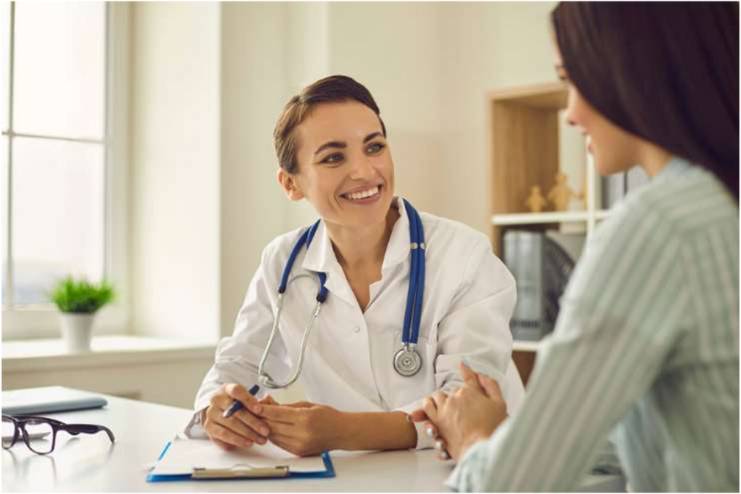Affiliate Disclaimer
Some links in this article are affiliate links. We may earn a small commission if you make a purchase through these links, at no extra cost to you. We only recommend products we find useful to our readersMaintaining a healthy weight affects many areas of our lives and is essential for general well-being. Finding the ideal balance on the scale is crucial for preventing many health problems and improving physical beauty. It involves lowering the chance of developing long-term illnesses like diabetes, heart disease, and some types of cancer. Reaching and maintaining a healthy weight enables people to enjoy active, meaningful lives beyond appearances.
Understanding Body Mass Index

The Body Mass Index, or known as the BMI, is a numerical estimate of an individual’s body fat derived from their height and weight combination. One of the most common methods for determining whether or not a person’s weight falls within the healthy range is the body mass index (BMI), which is determined by dividing the individual’s weight in kilograms by a square of their height in meters.
The Body Mass Index (BMI) classification system, which includes the following categories, is as follows: underweight (BMI < 18.5), average weight (18.5 ≤ BMI < 24.9), overweight (25 ≤ BMI < 29.9), and obese (BMI over 30).
Each range includes the relative quantity of body fat, providing some insight into potential health problems. For example, obesity is associated with an increased risk of cardiovascular illnesses, diabetes, and other issues related to weight.
While widely used, BMI has some restrictions as it may incorrectly classify individuals with high muscle mass as overweight or obese, given its inability to differentiate between muscle and fat. The body mass index (BMI) does not consider the distribution of fat throughout the body, which means that it does not consider the changes in the health risks associated with belly fat.
Even though body mass index (BMI) provides a helpful starting point for determining an individual’s weight status, it is essential to supplement its findings with other health indicators to thoroughly understand an individual’s overall health.
Also, read: How to Lose Weight Fast : Effective and Simple Ways to Cut Down Fat
Evaluating Waist Circumference

The waist circumference is an important statistic for evaluating abdominal fat and its effects on general health. Using flexible tape, you can correctly measure it by determining the circumference in the middle of the distance between the bottom of the ribcage and the top of the hip bone. This measurement, a crucial sign, can identify visceral fat, which is the type of fat that accumulates around internal organs.
It has been found that abdominal fat, and more specifically visceral fat, is linked to an increased risk of developing cardiovascular illnesses, diabetes, and metabolic syndrome. In contrast to the subcutaneous fat located beneath the skin, visceral fat is metabolically active. It releases molecules that lead to inflammation and insulin resistance, increasing the probability of experiencing health problems over time.
Guidelines for a healthy waist circumference differ depending on gender and race. According to the consensus, a waist circumference less than 94 centimeters (37 inches) for males and less than 80 centimeters (31.5 inches) for women is considered healthy. The fact that these values could differ for people of different ethnic backgrounds highlights the importance of conducting individualized evaluations. Regularly monitoring waist circumference allows individuals to gain vital insights into their levels of abdominal fat, enabling them to make more educated lifestyle choices and lower the related health risks.
HS Recommended Article: How to Reverse and Prevent Insulin Resistance with Simple Lifestyle Changes
Assessing Body Composition

The proportion of fat mass to non-fat mass in the body is called body composition. Body composition is of the utmost importance for both health and fitness objectives. Body composition measurements, as opposed to typical weight assessments, can provide a more detailed knowledge of an individual’s total physical health. A healthy body composition is vital for good health since it affects metabolism, energy levels, and general functional well-being. Maintaining a healthy body composition is extremely important.
There are several different approaches to evaluating body composition, each providing a unique perspective on fat distribution and muscle mass amount. Methods such as bioelectrical impedance and dual-energy X-ray absorptiometry (DEXA) are techniques that use highly developed technologies to evaluate bone density, fat, and lean tissue. When compared to weight alone, these methods offer a more precise picture, which is helpful in the process of developing individualized strategies for fitness and diet.
To determine a healthy weight, it is essential to learn how to balance the percentage of body fat and the amount of lean muscle mass. Regarding overall strength, metabolism, and functional fitness, lean muscle mass is more important than body fat percentage. Body fat percentage is a reflection of the quantity of fatty tissue available. It is essential to achieve a state of optimal equilibrium between these components, with a particular emphasis on concentrating on the development and maintenance of lean muscle while simultaneously regulating body fat. Individuals can achieve their exercise goals with this nuanced body composition approach, promoting holistic health.
Consulting with a Healthcare Professional

Achieving a good healthy weight is a personal journey best guided by healthcare professionals like licensed dietitians and medical practitioners. Their expertise allows them to assess health factors such as medical history, lifestyle, metabolic rate, and body composition. This personalized approach helps create weight management plans tailored to each person’s needs, leading to more effective and lasting results.
Professionals provide guidance on setting realistic weight goals and support in addressing broader health concerns. Collaborating with healthcare experts empowers individuals to make informed decisions that promote long-term well-being. Consulting professionals is crucial for those seeking sustainable health improvements and effective weight management strategies.
Conclusion
To establish a healthy weight range, we’ve looked at essential variables, including body composition, waist circumference, and BMI. Each of these variables provides distinct insights into an individual’s health. We also stressed the importance of speaking with medical experts to receive personalized guidance. Together, these components provide a thorough framework for evaluating each person’s weight and general health. Now that you know this, it’s time to take charge of your well-being. Although reaching and maintaining a healthy weight takes time, doing so is a decisive first step toward living a longer, healthier life.
References
- https://my.clevelandclinic.org/health/articles/9464-body-mass-index-bmi
- https://www.nhs.uk/common-health-questions/lifestyle/what-is-the-body-mass-index-bmi/
- https://www.diabetes.ca/resources/tools—resources/body-mass-index-(bmi)-calculator
- https://www.verywellfit.com/bmi-what-is-bmi-or-body-mass-index-3120088
- https://www.cdc.gov/healthyweight/assessing/bmi/index.html
- https://www.verywellhealth.com/waist-circumference-and-diabetes-1087703
- https://www.medicalnewstoday.com/articles/waist-circumference-is-vital-sign-of-health-experts-say
- https://www.bhf.org.uk/informationsupport/heart-matters-magazine/medical/measuring-your-waist
- https://www.ncbi.nlm.nih.gov/pmc/articles/PMC5973604/
- https://www.ncbi.nlm.nih.gov/pmc/articles/PMC7027970/
- https://www.webmd.com/fitness-exercise/what-is-body-composition
- https://www.bodystat.com/News/Why-body-composition-important?Gcrejp
- https://www.bodyvolume.com/post/the-importance-of-body-composition
- https://health.ucdavis.edu/sports-medicine/resources/body-fat
- https://partners-in-health.com/why-is-your-body-composition-so-important/
- https://www.betterhealth.vic.gov.au/health/servicesandsupport/dietitians
- https://www.niddk.nih.gov/health-information/professionals/clinical-tools-patient-management/weight-management/talking-with-your-patients-about-weight
- https://www.ncoa.org/article/what-is-nutrition-counseling-is-it-right-for-me
- https://www.weightlosscenterns.com/weight-loss-resources/2023/6/22/the-benefits-of-working-with-a-doctor-to-lead-your-weight-loss-strategy
In this Article


















